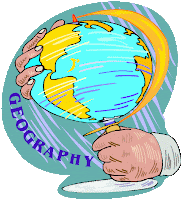Peter was a whiz-kid when it came to geography! His father
had introduced him to the subject before he ever started school and the young
child had been devouring it ever since. Ask Peter to locate any place on the
map and he could point right to it. But he wasn’t just good at place names. He
could tell you the climate, the animals, and the vegetation of the area. If
asked to reason why a certain event might take place in a specific country or
city, he would pause and then begin his sentence very slowly with, “Let’s see…”
He would then take all the information he knew about the place and reason very
logically why that event might have taken place there. He might also add, “But
I would also like to know…”
Peter was a phenomenal reader. At second grade, he was
reading at a 12th grade level. This enabled him to research easily.
Peter was gifted in geography.
While most students in first or second grades were learning
about their neighborhoods in school, Peter was exploring the world. He knew
that geography was not a dry subject.
To encourage students to improve their skills in geography, fill
their environments with maps, atlases, and globes and refer to them often. I
have a large world map hanging in my kitchen. There’s no need for me to look
for it or open it up when I want it. If I read about a place and I’m not sure
where it is, I can look it up. If I’m doing a crossword puzzle and one of the
questions pertains to geography, I can look it up. Have maps for everything. I
live in a sports oriented state, so I have maps of bike trails, hiking trails,
ski area trails, and cross-country ski trails. They are fun to study. Also
interesting are topographical maps, relief maps, political maps, and weather
maps. Each gives different kinds of information.
If you go to the zoo, get a map of the animal locations. If
you go to a museum, get a map of the exhibit locations. Have your child make a
map of your house. Talk about the arrangement of the rooms and how the present
locations function in your house. Then have your child create a map of his
ideal house. Have him explain why he placed the rooms where he did. Is it more
functional that way?
Use maps when studying history. Observe border changes. Why
do they change? How does geography influence where people settle? How does it
affect where people move? Discuss geography in relationship to current events.
How does geography affect alliances and conflicts throughout the world? Why do
the names of countries change?
Teach students how to read legends. Understand longitude and
latitude and time zones. How does geography affect climate? Make geography a
part of everyday life both at home and at school.
Geography involves far more than placing locations on a map.
Geography helps us to understand the relationship of places and people.
Additional resources include
Here you will find not only the U.S. National Geography
Standards, but lesson plans, activities, an atlas, and an interactive learning
museum.
Many more resources for teaching geography.
A national geography competition.

No comments:
Post a Comment
Your comments will be available after approval.